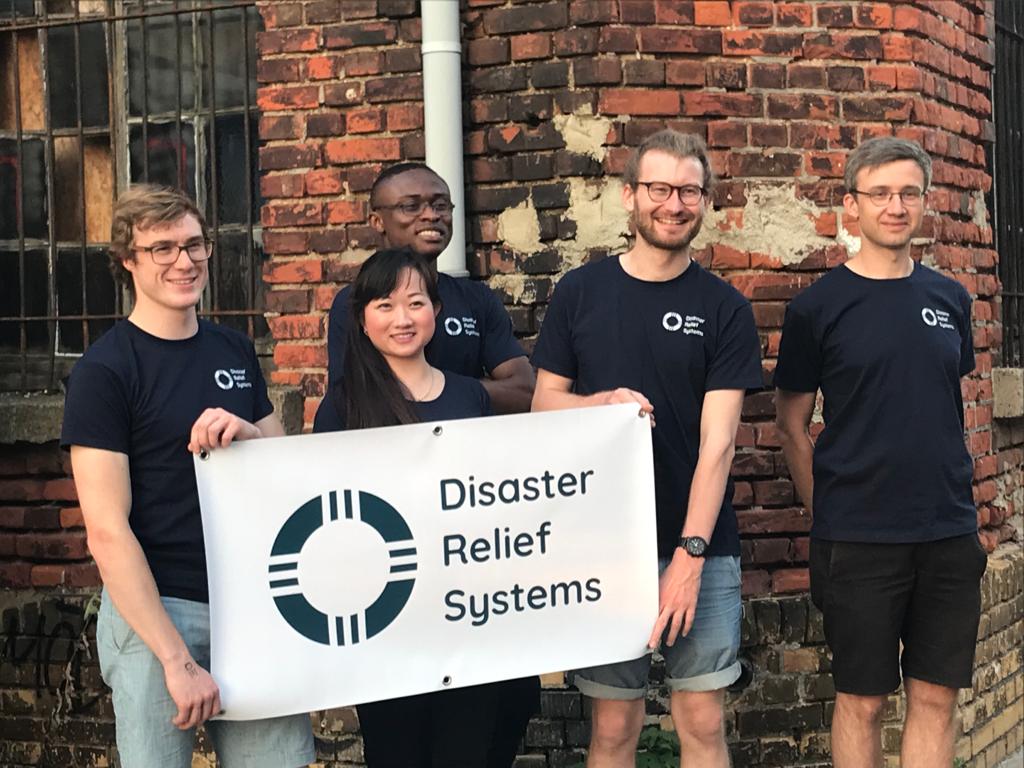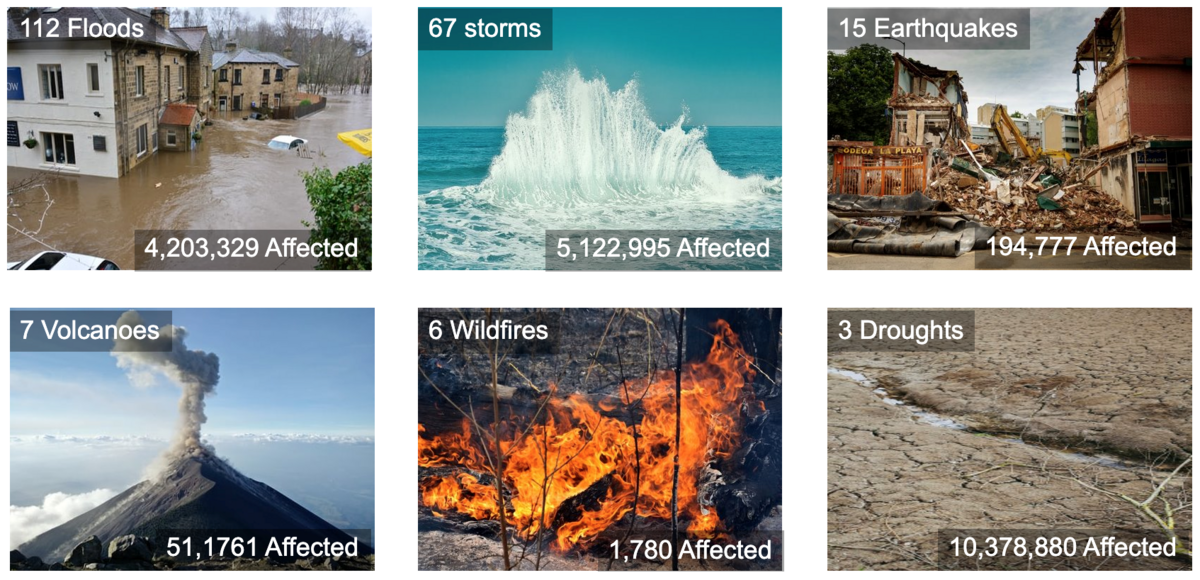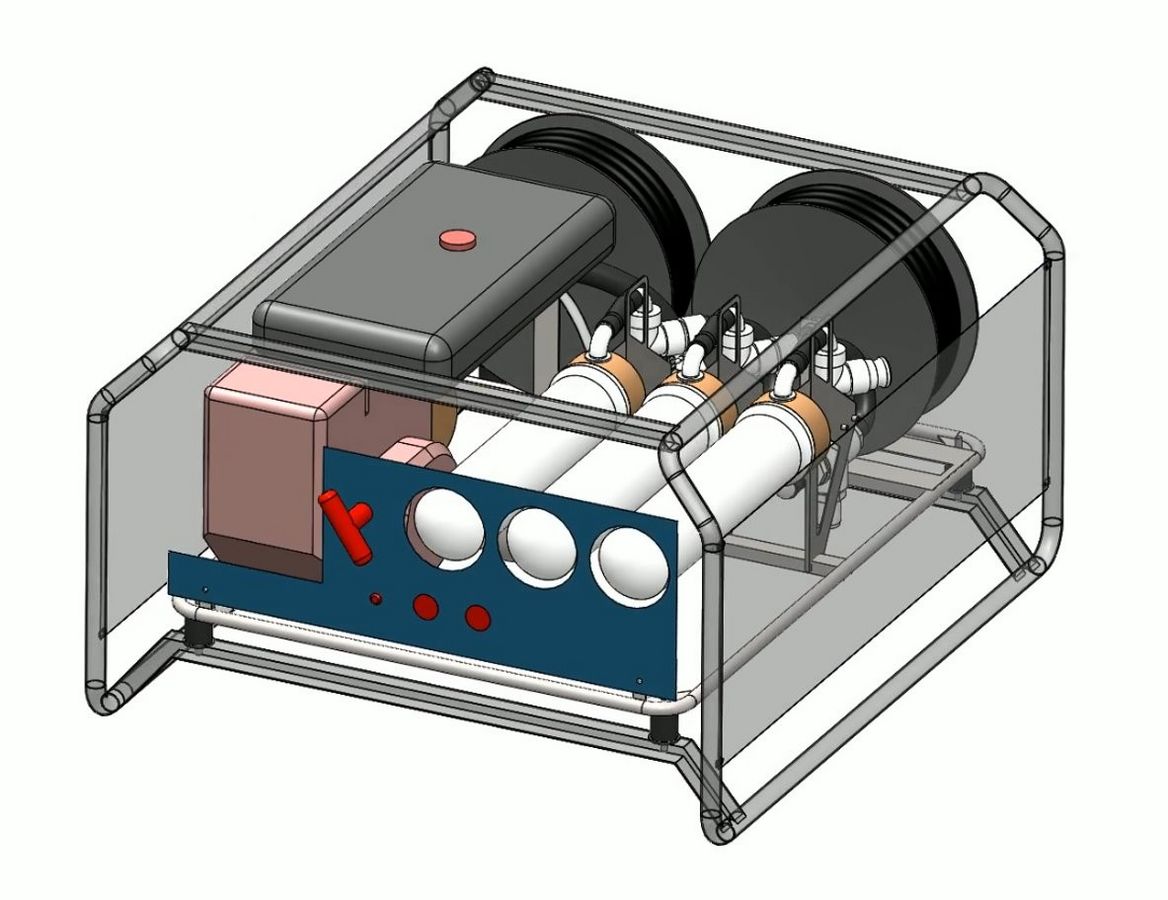The Disaster Relief Systems (DRS) working group aims to provide affordable technical equipment for immediate aid in case of a humanitarian catastrophe. Our systems consist of stackable, connectable, and transportable containers for filtering Water, generating Power, establishing emergency Communication, and Clearing streets. The units are designed to be as generic as they are simple in use.
Background
Every year, an average of 60,000 people die from natural disasters, while many are affected in different ways. The lack of support and lost property create socio-economic hardship, causing both internal and external displacement.
The goal of Disaster Relief Systems (DRS) is to have a planet worth living for all people. Our daily interaction with the environment results in climate changes which trigger natural disasters. The unpredictability of catastrophic incidents will always put people in life-threatening conditions. If both preventive and reactive disaster measures are not well taken, the social and economic stability of entire the planet will be at risk.
As a strategy to improve the quality of life, Disaster Relief Systems focuses on four core areas: access to areas struck by a disaster, the flow of information, access to clean water, and power generation. In each area, we want to develop devices standardized by their structure and can therefore be transported quickly anywhere in the world.
Pilot Product: Portable Water Purification Unit (SAS-750)
Disaster Relief Systems is currently developing a prototype of a portable water purification unit to serve more than 15,000 people in areas affected by disasters. The water treatment plant is designed to automatically clean its filters, using a new backwash technology. It is robust in size, eco-friendly and energy-efficient. Since roads and airfields are often blocked in emergencies, the device is designed to be airdroppable, such that it can be released with an aircraft to areas that are not motorable. The device currently weighs about 135 kg and can filter 750l of water per hour, using ultra-filtration.
From the point of design and production till delivery, key circular economy principles are incorporated to ensure sustainability and conservation of resources. For example the 5R- strategies (Reduce, Re-use, Recycle, Refurbish, and Re-pair) and a renting model are used to ensure efficient use of raw materials in the production process.
Partners
Disaster Relief Systems is a project currently sponsored by the BMWI and it is under the auspices of Leipzig University, precisely, the SMILE Center.
The construction of the prototypes is constantly being optimized through cooperation with civil relief organizations, such as the German Federal Agency for Technical Relief, the Red Cross, the Johanniter, or the Maltese, but also smaller organizations, such as Arche noVa from Dresden.
Disaster Relief Team
The brains behind this initiative are an able team of passionate and human-oriented individuals namely: John-Henning Peper, Frank Amankwah, Thu Thi Hoang, Sören Lohse, and Stephan Busch.




